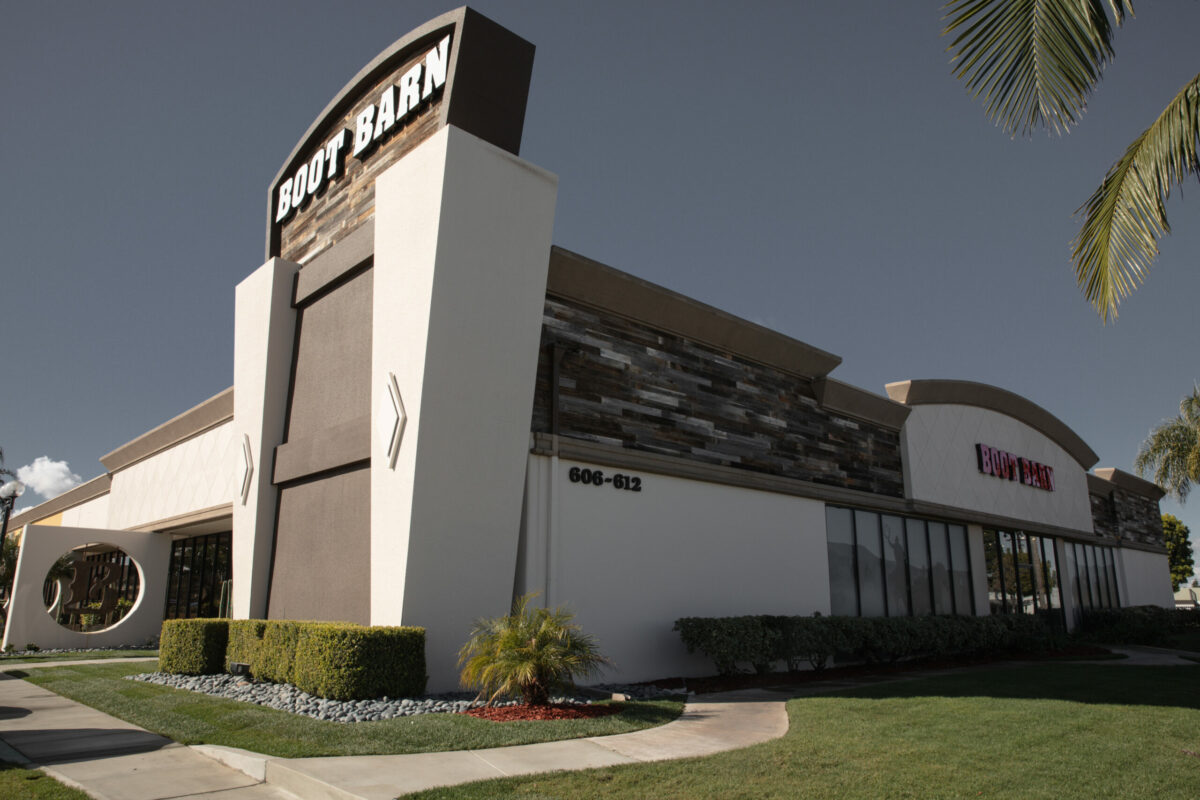
Shares of Boot Barn Holdings Inc. went on a wild ride on Wall Street this month where they started around $104 a share.
By press time, shares had climbed to $160.94 and a $4.9 billion market cap, making it a 55% rise in less than three weeks.
The Irvine-based Western wear retailer on May 5 confirmed interim Chief Executive John Hazen to a permanent position. Hazen, whose career included stints at True Religion and Nike, had joined Boot Barn in 2018 as chief digital officer. Hazen has big boots to fill, replacing Jim Conroy who drove the company’s stock to as high over $160 each and a valuation nearing $5 billion.
Hazen’s appointment moved shares only 1.3% to $111.29 the day after the May 5 announcement (NYSE: BOOT).
“We believe John Hazen will continue to emphasize the importance of BOOT’s top- and bottom-line growth initiatives,” Jefferies’ analyst Corey Tarlowe wrote following the news.
On May 12, two days before the company’s earnings call, the stock surged 13% to $133.30 apiece. Why? Optimism about a U.S. deal with China.
Boot Barn on May 14 reported a 17% jump to $454 million in fourth quarter sales, missing the average analyst estimate of $458.4 million.
Hazen attributed the increase to “incremental sales from new stores and the increase in consolidated same store sales.”
Boot Barn said same-store sales grew 6%, with retail rising 5.5% and e-commerce rising 9.8% during the fourth quarter. The company set a quarterly record by opening 21 new stores; however, new store openings are not calculated in same store sales, which measures the sales of a company’s existing stores. Net income jumped 28% to $37.5 million.
While the company missed the average analyst forecast across several metrics, Wall Street didn’t seem bothered. Shares jumped 17% to $154.97 apiece in the subsequent trading session.
Boot Barn forecasted first-quarter sales to grow between 14% and 16% and land between $483 million and $491 million, in line with the $486 million expected on average by analysts.
While concerned about the Q4 misses, Jefferies thought the guidance was encouraging.
“FY’26 guidance was relatively in-line with expectations despite the expected tariff pressures,” Tarlowe wrote in a note to investors on May 15. “Specifically, the co. is baking in tariff rates of China: 30%, global: 10%, and Mexico: 0%. Overall, we remain bullish on BOOT’s ability to gain or maintain market share while managing healthy margins despite the demand uncertainty ahead.”
CEO Transition, Tariffs Mitigation
Boot Barn’s record annual revenue of $1.9 billion “equates to $1 billion of sales growth over the last four fiscal years driven by the 186 stores opened during that period and our strong same-store sales growth,” Hazen told analysts on an earnings call.
Tarlowe also noted confidence in Boot Barn based on the leadership team’s report of a strong start for the first six weeks of the current quarter “with consistency across merchandise categories and geographies.”
Looking ahead to tariffs, Boot Barn laid out a mitigation strategy with impacts expected mostly in the second half of fiscal year 2026, where the company estimates $8 million in additional costs.
Third-party vendors have already notified Boot Barn of incoming cost increases starting in the summer that will be met with increased retail prices on impacted products so the retailer can maintain merchandise margin rates.
For Boot Barn’s exclusive products, factories are both absorbing costs and re-sourcing production to countries with lower tariffs.
“Over five years ago, Chinese factories produced more than half of our exclusive brand product. Thanks to our team’s ongoing diversification efforts, as of fiscal ‘25, this number was reduced to 24%,” Hazen said.
He added that Boot Barn expects China to “only produce approximately 5% of exclusive brand goods in the second half of fiscal ‘26 and in fiscal ‘27.”
